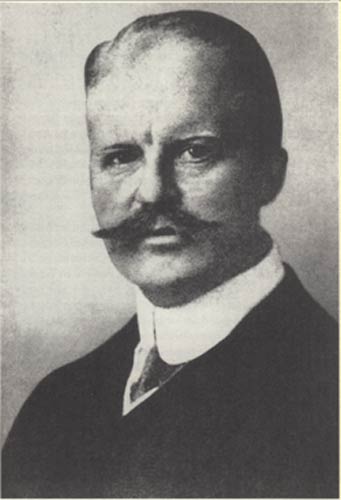 Arthur Zimmermann was Germany’s State Secretary for Foreign Affairs in November of 1916 until he resigned in August of 1917. He is most associated with the very famous “Zimmermann Telegram” which was sent during the First World War. Zimmermann was also linked to plans that supported an Indian rebellion, an Irish rebellion, and plans to aid the Communists in Russia.
Arthur Zimmermann was Germany’s State Secretary for Foreign Affairs in November of 1916 until he resigned in August of 1917. He is most associated with the very famous “Zimmermann Telegram” which was sent during the First World War. Zimmermann was also linked to plans that supported an Indian rebellion, an Irish rebellion, and plans to aid the Communists in Russia.
Birth and Early Career
Zimmermann was born in October of 1864, in Maggrabowa, East Prussia, which is an area located in Poland today. From 1884 to 1887, he studied law in Leipzig and in Knigsberg, East Prussia. Before he earned a doctorate in law, he worked as a junior attorney. In 1893, Zimmermann began work at the Consular Service Department in Germany.
Building a Career
In 1896, Arthur Zimmerman went to China for his work and by 1900, he had earned the rank of Consul. In 1911, he became Germany’s Undersecretary of State for Foreign Affairs. Zimmermann replaced Gottlieb von Jagow as the new Secretary of State for Foreign Affairs in November of 1916. He was the first person to hold that position who was not an aristocrat.
Zimmerman and World War I
Zimmermann was very involved in planning Germany’s military strategies to destabilize not only their opponents, but also their allies. One plan involved advising a coalition with Mexico, which resulted in the well-known “Zimmermann Telegram.”
Germany Breaks the Rules
The United States was not involved in the war during the spring of 1917. The country had been neutral even though many European countries were involved in the First World War. During the early part of 1917, Germany had tried to destroy Allied supply lines when they launched their submarine offensive. By doing this, they broke their agreement not to sink any merchant boats without a warning.
This offensive also meant that American merchant ships would come under attack, which would cause the Americans to respond. Germany planned to distract the Americans by increasing the hostilities between Mexico and the U.S. Germany believed this would tie-up America’s military resources there so they would not become involved in Europe’s war.
The Zimmermann Telegram
On January 16, 1917, Zimmermann sent Heinrich von Eckardt (Germany’s Ambassador in Mexico) a coded telegram that discussed the Mexican and German alliance proposal in the event that United States became involved in Europe’s war. The Germans were willing to offer the Mexican government plenty of financial support. They also planned to help Mexico regain their former territories in the part of America that included Arizona, Texas, and New Mexico.
However, the telegram was intercepted by Great Britain and they quickly deciphered it. The contents of Zimmermann’s telegram were revealed to the media by officials in the U.S. government. On March 1, the telegram’s contents were published by the press.
At the beginning, some newspapers in the U.S. thought Zimmerman’s telegram was fake and did not believe the British intelligence because they thought it was a ruse to get the Americans involved in the war.
Zimmermann Resigns
Zimmermann himself confirmed the telegram’s authenticity on March 29, and that ended the speculation on the part of the press. In 1917, America declared war against the Germans on April 6, partly because of the infamous Zimmermann Telegram. Zimmermann was forced to resign his position on August 6, as a result of the fallout of his telegram. In June of 1940, he died in Berlin from pneumonia.